Although they cover over 70% of our planet, only 0.6% of the world oceans are protected. It is estimated that we only know about 1 in 10 species in the ocean, which is unsurprising given that 90% of the ocean is more than half a mile deep and still remains largely unexplored. How might technology help us discover, understand and protect the vulnerable ecosystems below the waterline?
Marine Conservation is a fast-growing group in the WILDLABS community, capturing a wide variety of tech expertise within its member base, including those working with bioacoustic gear and hydrophones, AUVs and drones, sensors, machine learning, and more. By bringing together WILDLABS members from so many areas of conservation tech, the Marine Conservation group is the perfect place to collaborate on big, complex issues like marine biodiversity monitoring, coral reef health, plastic pollution, and sustainability.
The Marine Conservation group forum is also your place to chat about and solve the challenges unique to using conservation technology in marine environments. Whether you're struggling with deep-sea connectivity or salt water impacting gear longevity, or looking for remote solutions for long-term reef monitoring or biologging data collection, this group wants to help you explore the possibilities!
Check out some of the key marine conservation tech resources, conversations, and virtual events from across the WILDLABS platform:
Tutorials and Talks to Watch on Demand:
- Virtual Meetups: Developing cost-effective, open-source marine megafauna tracking, Jake Levenson
- Tech Tutors: How do I use open source remote sensing data to monitor fishing?, Max Schofield
- Virtual Meetups: eDNA for Aquatic Biodiversity, Alice Valentini
Case Studies, Tools, Research, and News:
- Southern Right Whales & Genome and Satellite Technology, Emma Carroll | eDNA & genomics, satellite data, biodiversity monitoring, climate change
- Building Experts Into AI, Whale Seeker | Machine learning, marine conservation, AI ethics
- Using AIS Data to Investigate the World’s Fishing Ports, Max Schofield | Remote sensing, data visualisation, fishing monitoring
- Small-scale fisheries and tech resources, Dan Steadman | Fishery monitoring, webinars, best practices
- Press Release: BAS Giant Iceberg Mission, British Antarctic Survey | Climate change, AUVs, remote sensing
- Case Study: Thermal imaging, drones, and loggerhead sea turtles, Megan Ossmann | FLIR, Duo Pro R camera, drones
- eDNA sampling to detect invasive snails in shipping ballast water, Gavin Shelton | Invasive species, eDNA, shipping
- Sustainable Fishing Challenges: Fish Catch Monitoring, Dan Steadman | Biologging, sensors, fishing monitoring
Conversations and Questions:
- Satellite tags for marine turtle recommendations | Alasdair Davies
- Calling all hydrophone users! | Team Open Acoustic Devices
- How difficult is it to build a buoy and constrain it in place? | Lindy Knowles
- Methods to detect Derelict Fishing Gear | Nandini Mehrotra
- Drone Mapping for Algal Blooms? | Harold Tay
- Minimising habitat impact of trawling gear | Dan Steadman
- Estimating carbon from 3d models of mangroves | Mark Brown
- Can we detect gillnets in turbid water? | Aurélie Shapiro
- New low cost DIY temperature loggers for reef monitoring | Harold Tay
- Machine learning to detect fish bomb blasts | Jamie Macaulay
Header Image: Emma Vogel
No showcases have been added to this group yet.
Wildlife Protection Solutions (WPS)
Software Engineer in Conservation Tech



- 2 Resources
- 15 Discussions
- 10 Groups
- @machadoams
- | He/Him
Universidade Federal de Santa Catarina (UFSC)
I am a behavioural ecologist interested in the role of individual variation in ecological interactions and in human-wildlife dimensions
- 0 Resources
- 0 Discussions
- 9 Groups
- @Palinda
- | He
Corporate Responsibility Specialist & Sustainability/ Climate Change Professional Helping Conservation, Restoration, Community Livelihood Development ESG strategy and Sustainable Development.
- 0 Resources
- 0 Discussions
- 8 Groups
Research software engineer working in computer vision for animal behaviour
- 1 Resources
- 1 Discussions
- 13 Groups
Natural Solutions
Computational ecologist - Engineer at Natural Solutions (France)



- 0 Resources
- 1 Discussions
- 13 Groups
- @Lucille
- | She/Her
La Trobe University
Marine bioacoustician and elasmobranch scientist
- 1 Resources
- 9 Discussions
- 8 Groups
Wildlife Drones
Wildlife Drones has developed the world’s most innovative radio animal-tracking system using drones so you can track your radio-tagged animals like never before.


- 18 Resources
- 8 Discussions
- 31 Groups
- @AndreaHerguedas
- | She/her
PhD student ~ acoustic stress response and behavior of sea turtle juveniles
- 0 Resources
- 0 Discussions
- 4 Groups
- 0 Resources
- 0 Discussions
- 10 Groups
- @emilyhuston
- | she/her/hers
Hi! I am currently pursuing a masters degree in wildlife conservation and management, and I am looking to gain more information and form connections with people who are interested in all the same things :)
- 0 Resources
- 0 Discussions
- 6 Groups
- @reny.tyson.moore
- | She/Her/Hers
- 0 Resources
- 0 Discussions
- 4 Groups
Currently a data scientist in industry working on mechanistic models of risk, previously worked on modeling coral reefs. I am interested in the potential for emerging technologies and new ideas to help us solve environmental crises.
- 0 Resources
- 0 Discussions
- 14 Groups
Un ambicioso proyecto internacional está usando transmisores satelitales para monitorear los viajes migratorios de ballenas francas australes, permitiendo entender sus sorprendentes patrones de desplazamiento en tiempo...
7 August 2025
If you're a PhD student, post-doc, advisor, or marine expert - Plan Vivo is looking for you!
5 August 2025
Una misión pionera para conocer y proteger las profundidades del talud argentino // A pioneering mission to explore and protect the depths of the Argentine continental slope
31 July 2025
Careers
This role will investigate the potential of large-scale deep learning models, for constructing 3D models of coral reefs
28 July 2025
The Marine Innovation Lab for Leading-edge Oceanography develops hardware and software to expand the ocean observing network and for the sustainable management of natural resources. For Fall 2026, we are actively...
24 July 2025
Are you interested in building one of the world’s first reliable satellite imagery models for water quality prediction? Are you a machine learning or remote sensing engineer who loves applying hard technical skills to...
10 July 2025
While learning from our ecological restoration project managers’ experience, the Assistant Project Manager will provide essential technical and logistical support to the team. This role will focus on fieldwork, data...
10 July 2025
This is a chance to participate in a short survey about the preferences that conservation practitioners have for evidence. There's a chance to win one of three £20 Mastercard gift cards.
24 June 2025
Please help us by participating in a MSc research project on what you consider to be 'evidence' in your work in conservation.
19 June 2025
Shared from WWF: "ManglarIA is a mangrove conservation project, supported by Google.org in 2023, that is deploying advanced technology, including artificial intelligence (AI), to collect and analyze data on the health...
12 June 2025
Article
Programa de aceleración para emprendimientos que trabajan en la protección y restauración del Arrecife Mesoamericano. Incluye bootcamp, mentoría personalizada y networking para proyectos de impacto marino.
2 June 2025
Conservation International is proud to announce the launch of the Nature Tech for Biodiversity Sector Map, developed in partnership with the Nature Tech Collective!
1 April 2025
October 2025
event
March 2026
September 2024
event
August 2024
| Description | Activity | Replies | Groups | Updated |
|---|---|---|---|---|
| want to join 2025 contest for humpback whale photos in Juneo Alaska of Kelp |
|
Citizen Science, Conservation Tech Training and Education, Drones, Emerging Tech, Geospatial, Human-Wildlife Coexistence, Marine Conservation, Open Source Solutions | 1 day 13 hours ago | |
| Hi Elsa, We have used InVEST for a pollinator project we supported (the crop pollination model - details here), and looking to using it more for marine and coastal... |
|
Geospatial, Software Development, Climate Change, Funding and Finance, Marine Conservation, Open Source Solutions | 1 week ago | |
| Wow this is amazing! This is how we integrate Biology and Information Technology. |
|
Camera Traps, AI for Conservation, Build Your Own Data Logger Community, Data management and processing tools, Marine Conservation, Protected Area Management Tools, Geospatial | 2 weeks 4 days ago | |
| G-DiNC 2026: Global Drones in Nature Conservation Symposium & ExpoNairobi & Naivasha, Kenya | March 3–6,... |
|
Drones, AI for Conservation, Conservation Tech Training and Education, Emerging Tech, Marine Conservation, Sensors | 4 weeks 2 days ago | |
| Play FathomVerse: App Store | Google Play Join the Community: Discord | Instagram | TikTok | LinkedInStay up-to-date: ... |
|
Marine Conservation, AI for Conservation, Citizen Science | 4 months 2 weeks ago | |
| I create ocean exploration and marine life content on YouTube, whether it be recording nautilus on BRUVs, swimming with endangered bowmouth... |
|
Acoustics, AI for Conservation, Animal Movement, Camera Traps, Citizen Science, Drones, Emerging Tech, Marine Conservation, Sensors, Sustainable Fishing Challenges, Wildlife Crime | 1 month 2 weeks ago | |
| Hi WILDLABS Community! I have started mapping the project for the Gulf of America Dead Zone and here are some photos of the progress. In the last picture, I have... |
|
Climate Change, Marine Conservation, Wildlife Crime | 1 month 3 weeks ago | |
| Hello WILDLABS!We are very excited and grateful to be recipients of one of the WILDLABS 2025.I (Tom Knowles, @TomKnowles) am currently a... |
|
Acoustics, Marine Conservation | 1 month 4 weeks ago | |
| I would love to hear updates on this if you have a mailing list or list of intersted parties! |
|
AI for Conservation, Community Base, Drones, Latin America Community, Marine Conservation, Open Source Solutions, Software Development | 2 months ago | |
| Gina- Sounds like an interesting thesis topic! I work with bioacoustics in offshore waters and I'd be happy to have a chat and provide feedback-- feel free to message me via... |
|
Emerging Tech, Acoustics, Connectivity, Marine Conservation, Sensors | 2 months ago | |
| Hi, My name is Gina. I'm currently working on my Bachelor's Thesis and would like some feedback on my final concept. It is a ... |
|
Acoustics, Emerging Tech, Marine Conservation, Sensors, Women in Conservation Tech Programme (WiCT) | 2 months 1 week ago | |
| p.s. https://environmentjob.co.uk/jobs has internships searchable for any location, not just UK. |
|
Geospatial, Early Career, Marine Conservation | 2 months 2 weeks ago |
World Ocean Tech and Innovation Summit
13 September 2022 1:12pm
Catch Up with the Variety Hour: September 2022
6 September 2022 12:31pm
Postdoc: Noise Impacts on Marine Animals
1 September 2022 9:25pm
Solicitation of Interest: NAVFAC Atlantic Marine Resources
31 August 2022 7:28pm
Consultancy - Development and implementation of SMART for Sao Tome and Principe
31 August 2022 5:24pm
ONLINE COURSE: Grant Writing for Wildlife Conservation
31 August 2022 2:38pm
Acoustics Modeler & Analyst, Marine Acoustics Inc
30 August 2022 9:45am
Opportunity: Commercial Director
12 August 2022 12:57am
3yr Postdoctoral Associate: Remote Sensing and Unoccupied Aircraft Systems
10 August 2022 5:29pm
Catch Up with the WILDLABS Variety Hour: August 2022
10 August 2022 11:44am
Sydney seals: From Manly to Malabar, marine life sprawls across a city
8 August 2022 12:59pm
Ocean Tracking Network Symposium 2022
5 August 2022 2:47pm
HydroMoth GroupGets campaign
28 June 2022 11:07am
20 July 2022 5:57pm
@Andrew_Hill Out of curiosity, since this campaign reached its goal & is ending soon, is it possible to turn the remaining Hydromoth units that didn't sell into Audiomoths for a limited GroupGets? I understand that Hydromoths can be used terrestrially as well, but they are more expensive than the last Audiomoth campaigns have been by $50+ so just wanted to see if Audiomoths would still be cheaper. Just trying to figure out if I should buy more Hydromoths or wait until Audiomoths start selling again (ends up being a trade-off between cost and time basically).
31 July 2022 5:20pm
@Andrew_Hill I wonder if you could let us know more about the time keeping difference btw the regular AudioMoth and the HydroMoth (which is said to do better)?
Postdoc: Biologging & Behavioral Ecology of Marine Mammals
22 July 2022 7:42pm
Earth Species Project - Senior AI Research Scientist
15 July 2022 6:40pm
Director, Imaging Technology Lab (Woods Hole Oceanographic Institution)
11 July 2022 6:32pm
Consultancy: Development and Implementation of SMART (Spatial Monitoring and Reporting Tool) for São Tomé and Príncipe
1 July 2022 6:15pm
Calling all hydrophone users!
26 November 2020 10:06am
8 January 2021 4:54pm
This is super interesting to read, thanks for sharing back!
Steph
8 January 2021 5:07pm
Glad it was useful Steph.
We'll be leaving the survey open for as long as neccesary to build up a better idea of use-cases. So if any hydrophone users missed out you are more than welcome to add yours responses. We can then update the results later in the year.
Andy
Team Open Acoustic Devices
1 July 2022 12:06am
Hello,
The hydrophone_survey_results.pdf file is not opening. Is the link still working? I would be keen to see it. Thank you.
Self-powered Buoy collecting vital sensor data -- Looking for conservation projects to collaborate with
18 May 2022 6:28am
3 June 2022 7:19am
Hello Aadithya,
Excited to hear about your marine acoustics outreach. I am interested to explore the possibilities of collaborative work on this line.
One of my doctoral scholars is about to submit his thesis on terrestrial acoustic studies. Please respond to jrnair@duk.ac.in (as I may likely miss responses if any, send to this group).
Regards
Jaishanker
14 June 2022 11:46am
Hi Jaishanker, I just reached out to over email, apologies for the delay. We are interested in working with underwater hydrophones and this might be of use in your specific case study. Bristlemouth's timeline is still being created, but we're hoping to have devkits ready closer to the end of this year. I'm happy to chat more to learn about the specific research you are doing and how we can best help!
21 June 2022 10:49pm
If you're looking to identify collaborators - probably lots of organizations listed in the Conservation Tech Directory would be interested (quick prelim search yields orgs like Echospace, European Tracking Network, FACT network, IMOS, IOOS, other tracking networks like that, USA's NEON, eOceans, Oceans+)! Also org's like Blue Ventures, Save our Seas (run acoustic tracking array), MBON (run Biotrack) come to mind.
New app aims to take a bite out of illegal shark fin trade
14 June 2022 3:52pm
Smithsonian Magazine: "Underwater Roombas" scan southern California coast for DDT barrels
4 June 2022 7:30pm
New article (Reuters): Orca stuck in river to be lured to sea using drone with loudspeakers
1 June 2022 4:02pm
MTS TechSurge
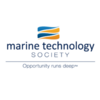 Marine Technology Society
Marine Technology Society
10 February 2022 12:00am
Tech Tutors: How do I analyze large acoustic datasets using PAMGuard?
14 October 2021 3:42pm
Tech Tutors: How do I use animal-borne imaging technology in marine and terrestrial environments?
26 August 2021 12:10am
15 September 2021 6:41am
Hi @Rob+Appleby !
The implementation in the Vectronic camera collar is purely store on board - no transmission.
I believe they simply stuck one of the Foxeer action ("Box") cameras inside and wakes it up and triggers it according to the camera schedule uoloaded to the collar (still and video options).
RunCam is another manufacturer of FPV and action cameras which might be interesting for you.
Cheers,
Lars
15 September 2021 11:24pm
Hi Lars,
I have a colleague that's successfully used the Mobius cam system (https://www.mobius-actioncam.com/) for camera collars as well. RC cams are popular choice it seems. I have been attempting to tweak cheaper 'cube' cameras (e.g. https://tinyurl.com/w72kh77r) to do a similar job. I am using a bit of Frankestein's monster array of small control boards, including an Adafruit low power timer (https://www.adafruit.com/product/3573) and a SparkFun pro mini (https://www.sparkfun.com/products/11113). I am using an SMD transistor as a switch to control power, and another could be added to control settings if needed. Hoping to do a tutorial on it at some point in case there's any interest.
Cheers,
Rob
16 September 2021 6:54am
Would certainly be cool to see a tutorial on this! Looking forward to that!
Job openings in marine tech & ML
18 August 2021 2:25pm
IoTs in Marine protected area management
7 June 2021 8:12am
8 June 2021 10:16am
Hi Mauman.
Did you have a specific application in mind? There are quite a few IoT systems but they all need to be pieced together. If there's a specific application context, I think it'd be an interesting discussion to have though.
Akiba
How difficult is it to build a buoy and constrain it in place?
14 March 2019 3:54pm
23 November 2020 5:23pm
Akiba,
You might want to check out these systems, if you haven't seen them already?
http://www.smruconsulting.com/the-coastal-acou-a-new-tool-for-remote-and-real-time-acoustic-monitoring/
https://www.seiche.com/underwater-acoustic-products/platforms/acoustic-monitoring-buoy/
https://www.mseis.com/services/buoys/
https://rtsys.eu/buoys
Thanks, Carlos
29 December 2020 11:45am
I worked with some folks years ago, and I'll dig into my files to see if I had a schematic of some sort. this following video --> https://www.youtube.com/watch?v=OMzk94BQ-sg&ab_channel=RobertBevan is similar to what we would've done, though we did use insulation foam in place of the pool float, upcycled soda bottles and to anchor in place we used a car tire with cement and an I bolt alongside somethign that swivels so that the rope that holds the bouy doesn't snap off. We used it in shallower and calmer areas, though it might've been 10'-15' (3-5m). I'll make a note to look for any files I have of the project, and if you don't hear from me in the new year, could you send me a reminder?
As @Freaklabs would've heard me say a few times, PVC, whilst not environmentally friendly, is quite adaptable and can allow a modular system to be built to suit your needs.
29 December 2020 11:53am
"On a side note, I've discovered it's really hard to say "I'm interested in small buoys" without creating awkward silence in a room. "
HAHAHAHA... yeah, it's probably best not to ever do that.
Tech Tutors: How do I use open access remote sensing data to monitor fishing?
2 December 2020 9:12pm























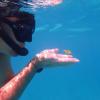









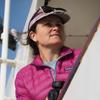





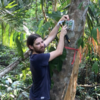











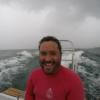
20 July 2022 3:06am
From Alex on Twitter: